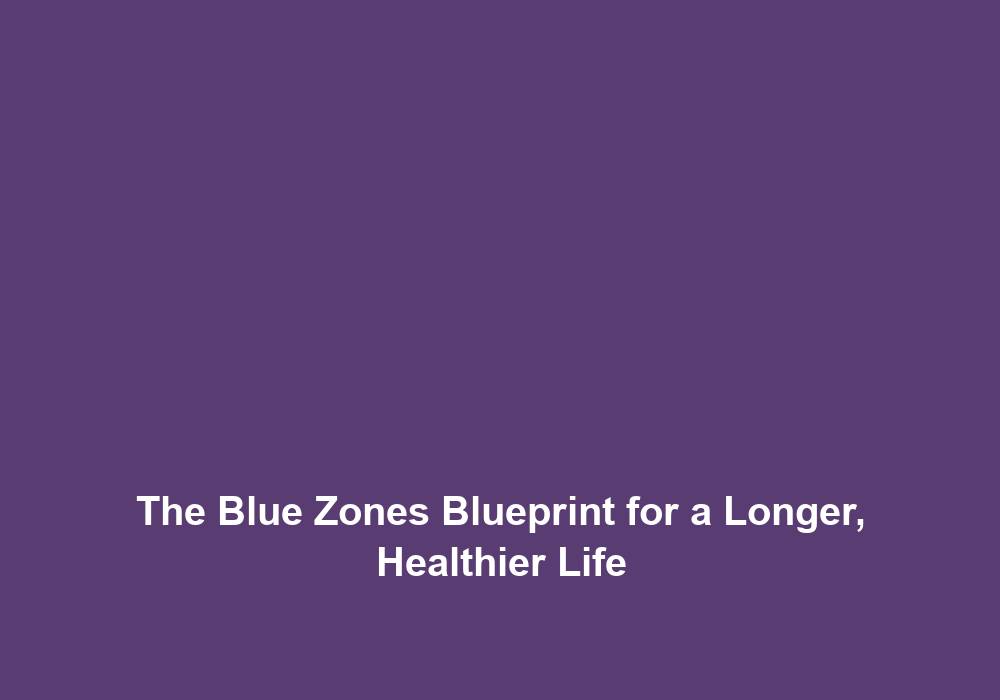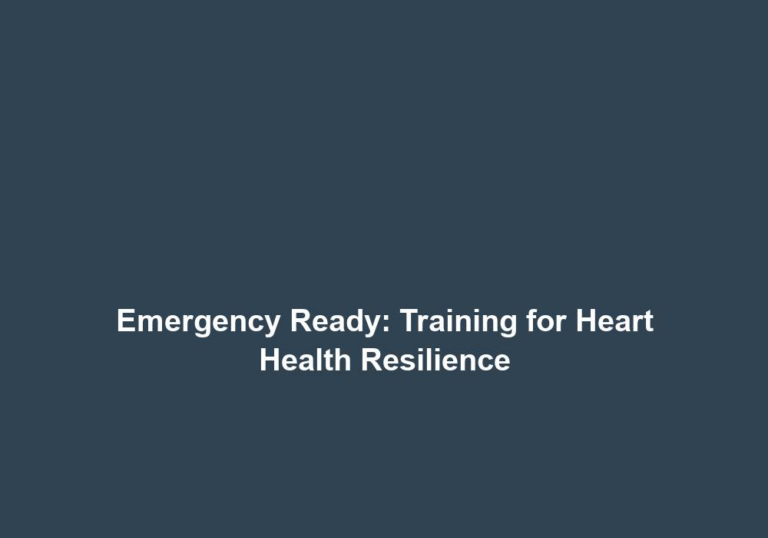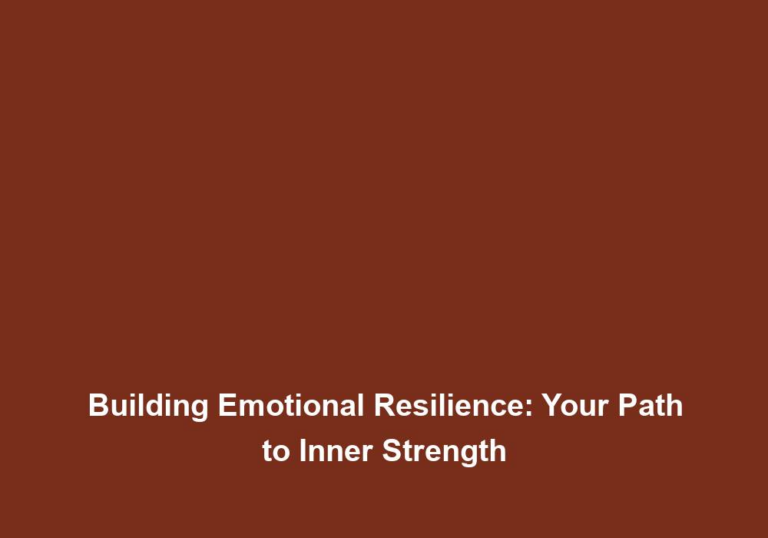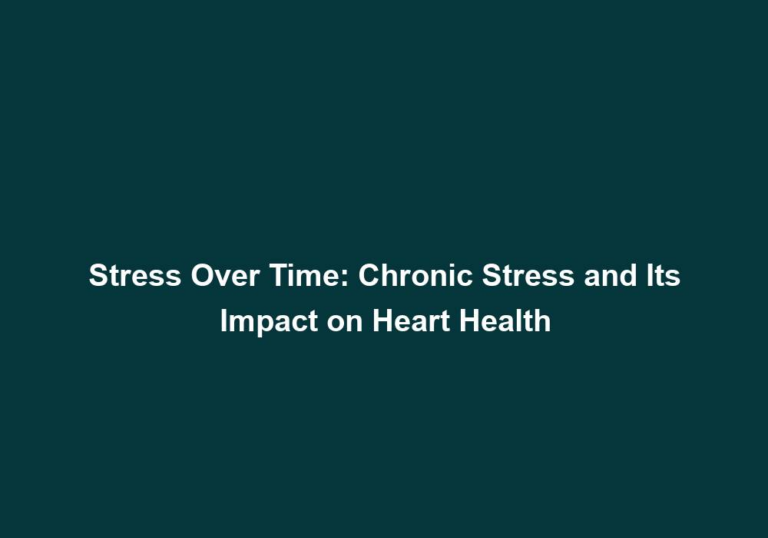The Blue Zones Blueprint for a Longer, Healthier Life
In this article, we will explore the fascinating concept of Blue Zones and their impact on living a longer and healthier life. Blue Zones are regions around the world where people tend to live significantly longer than the global average, often reaching the age of 100 or more. The lifestyle and habits of people in these areas have been studied extensively, leading to the development of a blueprint that can guide us towards a longer and healthier life. Let’s delve into the key factors that contribute to the longevity of Blue Zone residents.
1. Plant-Based Nutrition
A common thread across all Blue Zones is a predominantly plant-based diet. These communities consume a variety of fruits, vegetables, legumes, and whole grains, while limiting their intake of processed foods and meat. Plant-based nutrition provides a rich source of essential nutrients, antioxidants, and fiber, which play a crucial role in maintaining optimal health and preventing chronic diseases.
Incorporating a variety of fruits and vegetables into our diet ensures that we receive a wide range of vitamins, minerals, and phytochemicals that support our immune system, promote healthy digestion, and provide protection against chronic diseases such as heart disease and certain cancers. Additionally, legumes and whole grains are excellent sources of protein, fiber, and complex carbohydrates, which help to stabilize blood sugar levels, support weight management, and provide sustained energy throughout the day.
By limiting the consumption of processed foods and meat, which are often high in unhealthy fats, added sugars, and sodium, we can reduce the risk of obesity, diabetes, and other lifestyle-related diseases. Instead, focusing on whole, plant-based foods ensures that our bodies receive the essential nutrients they need for optimal functioning and overall well-being.
2. Active Lifestyle
Regular physical activity is an integral aspect of life in Blue Zones. The residents engage in natural movements throughout their day, such as walking, gardening, and manual labor. They do not rely heavily on modern conveniences that promote a sedentary lifestyle. Incorporating physical activity into our daily routines can improve cardiovascular health, strengthen muscles, and enhance overall well-being.
Engaging in regular physical activity has numerous benefits for our physical and mental health. It helps to improve cardiovascular fitness, lower blood pressure, and reduce the risk of chronic conditions such as heart disease, stroke, and type 2 diabetes. Physical activity also plays a crucial role in maintaining a healthy weight and preventing obesity.
In addition to the physical benefits, regular exercise has a positive impact on mental health. It helps to reduce symptoms of anxiety and depression, improve sleep quality, boost mood, and enhance cognitive function. Incorporating activities such as walking, cycling, swimming, or dancing into our daily routine can provide a significant boost to our overall well-being.
3. Strong Sense of Community
The social connections and support systems in Blue Zones are remarkable. People in these areas have close-knit communities where individuals look out for each other, celebrate together, and provide emotional support. Building and nurturing social connections can lead to reduced stress levels, improved mental health, and ultimately contribute to a longer and happier life.
Being part of a supportive community has a profound impact on our well-being. It provides a sense of belonging, purpose, and security, which are essential for our mental and emotional health. Strong social connections help to reduce feelings of loneliness and isolation, boost self-esteem, and provide a support network during challenging times.
In Blue Zones, community involvement is often a natural part of daily life. Residents engage in activities such as community gardening, group exercise classes, and regular social gatherings. These interactions foster a sense of camaraderie, promote positive mental health, and create an environment of support and belonging.
4. Purposeful Living
Having a strong sense of purpose and meaning in life is incredibly important in Blue Zones. The residents have a clear understanding of their values, passions, and goals, which give them a reason to wake up every morning. Cultivating a purposeful life can increase happiness, motivation, and overall life satisfaction.
When we have a sense of purpose, we are more likely to engage in activities that align with our values and bring us joy and fulfillment. This sense of direction and meaning gives us a sense of control over our lives and helps us overcome challenges with resilience and determination.
Finding our purpose can be a lifelong journey of self-discovery and exploration. It involves reflecting on our passions, values, and strengths, and identifying how we can contribute to the world in a meaningful way. Once we have a clear sense of purpose, we can set goals and take actions that align with our values, bringing us a sense of fulfillment and satisfaction.
5. Stress Reduction
While stress is an inevitable part of life, managing and reducing it is crucial for longevity. Blue Zone inhabitants practice various stress reduction techniques such as meditation, daily rituals, and spending quality time with loved ones. Finding healthy outlets to cope with stress, such as engaging in hobbies or practicing mindfulness, can have a significant impact on our overall well-being.
Chronic stress can have detrimental effects on our physical and mental health. It can contribute to the development of conditions such as high blood pressure, heart disease, and depression. By incorporating stress reduction techniques into our daily lives, we can mitigate the negative effects of stress and promote a healthier, more balanced lifestyle.
Practices such as meditation, deep breathing exercises, and mindfulness have been shown to reduce stress levels, improve emotional well-being, and enhance resilience. Engaging in activities that bring us joy and relaxation, such as spending time in nature, practicing yoga, or listening to music, can also help to alleviate stress and promote a sense of calm.
6. Moderate Alcohol Consumption
Interestingly, some Blue Zones have a tradition of moderate alcohol consumption, particularly in the form of red wine. However, it’s important to note that excessive alcohol intake can have detrimental effects on health. Following the principle of moderation can provide potential benefits, as some studies suggest that moderate alcohol consumption may reduce the risk of heart disease and promote longevity.
Moderate alcohol consumption refers to consuming alcohol in moderation, typically defined as up to one drink per day for women and up to two drinks per day for men. Red wine, in particular, has been associated with potential health benefits due to its antioxidant content. Antioxidants help to reduce inflammation and protect against oxidative stress, which can contribute to the development of chronic diseases.
However, it’s essential to note that excessive alcohol consumption can have serious health consequences. It can increase the risk of liver disease, addiction, accidents, and certain types of cancer. It’s crucial to make informed choices about alcohol consumption and to prioritize moderation and responsible drinking habits.
7. Natural Movement
Blue Zone residents incorporate natural movement into their daily lives, instead of relying solely on structured exercise. Whether it’s walking instead of driving or engaging in physical labor, these communities prioritize staying active throughout the day. Embracing natural movement can improve mobility, increase flexibility, and support a healthy weight.
Incorporating natural movement into our daily routines is a simple yet effective way to stay active and improve our overall health. Instead of relying solely on structured exercise, we can find opportunities to move more throughout the day. This can include activities such as walking or biking to work, taking the stairs instead of the elevator, or engaging in household chores and gardening.
Natural movement helps to improve mobility, flexibility, and balance, reducing the risk of falls and injuries. It also supports a healthy weight by burning calories and increasing metabolism. By incorporating natural movement into our daily lives, we can make physical activity a seamless part of our routine and enjoy the benefits of an active lifestyle.
8. Family First
Family plays a central role in the lives of Blue Zone residents. They prioritize spending time with their loved ones, often living in multigenerational homes and supporting each other through thick and thin. Strong family bonds contribute to emotional well-being and provide a sense of belonging and support.
Nurturing strong family bonds is essential for our overall well-being and happiness. Spending quality time with loved ones allows for the exchange of love, support, and shared experiences. It provides a sense of belonging, security, and stability, which are fundamental human needs.
In Blue Zones, family is often at the center of daily life. Multigenerational households allow for intergenerational connections, where wisdom and knowledge are passed down from older family members to younger generations. This interdependence fosters a sense of unity and connection, promoting emotional well-being and resilience.
9. Healthy Social Environment
Blue Zone communities promote healthy behaviors by creating an environment that encourages and supports good habits. This includes access to nutritious food options, safe spaces for physical activity, and cultural practices that prioritize health and well-being. Designing our surroundings to facilitate healthy choices can have a profound impact on our lifestyle and overall health.
Creating a healthy social environment is crucial for cultivating positive habits and supporting our well-being. When we are surrounded by an environment that promotes healthy choices, we are more likely to engage in behaviors that contribute to our overall health.
Access to nutritious food options, such as farmers’ markets and community gardens, makes it easier to incorporate wholesome foods into our diet. Safe and accessible spaces for physical activity, such as parks, walking trails, and bike lanes, encourage regular exercise and outdoor activities. Cultural practices that prioritize health, such as community celebrations centered around physical activity or healthy eating, reinforce positive habits and foster a sense of collective well-being.
By designing our surroundings to support healthy choices, we can create an environment that nurtures our physical, mental, and emotional well-being. This, in turn, enhances our quality of life and contributes to a longer and healthier life.
Conclusion
The Blue Zones offer an enlightening blueprint for a longer and healthier life. By adopting a plant-based diet, embracing an active lifestyle, nurturing social connections, finding purpose, and managing stress, we can improve our chances of living a fulfilling and vibrant life. Incorporating the lessons learned from these extraordinary communities can guide us towards optimal well-being and longevity. Let’s embark on this journey together, prioritizing our health and making choices that will lead us to a longer, healthier life.







